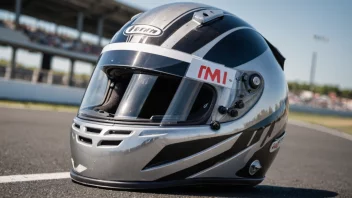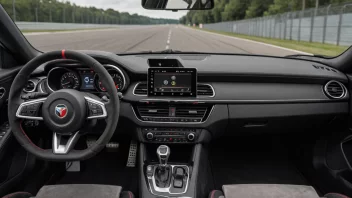In the high-speed world of motorsport, safety is paramount. One of the key components of track safety is the use of safety barriers, which are designed to absorb energy and protect both drivers and spectators from the dangers associated with high-speed crashes. In this article, we will compare two prevalent types of safety barriers used in motorsport: concrete walls and SAFER barriers (Steel and Foam Energy Reduction barriers). We will explore their construction, effectiveness, advantages, disadvantages, and how they impact overall safety during racing events.
Construction and Design
Concrete walls are traditionally used in motorsport venues. They are solid structures built to withstand high-speed impacts. Typically, they are poured on-site and reinforced with steel rebar to ensure structural integrity.
On the other hand, SAFER barriers are a more modern innovation in motorsport safety. These barriers consist of a steel frame with foam padding attached to the front. The foam absorbs energy upon impact, reducing the force transmitted to the driver. This design allows for a more controlled deceleration during a collision.
Advantages of Concrete Walls
- Durability: Concrete walls are extremely durable and can withstand significant impacts without suffering damage.
- Cost-Effective: They are relatively inexpensive to construct and maintain compared to more advanced barrier systems.
- Established Safety Record: Concrete barriers have been used for decades, providing a proven safety measure in many racing environments.
Disadvantages of Concrete Walls
- High Impact Risk: When vehicles collide with concrete walls, the impact can lead to severe injuries for drivers due to the lack of energy absorption.
- Limited Flexibility: Concrete does not provide any give upon impact, meaning the full force of a collision is transferred to the vehicle and driver.
Advantages of SAFER Barriers
- Energy Absorption: The foam padding significantly absorbs impact energy, reducing the risk of injury for drivers during collisions.
- Reduced G-Forces: Drivers experience lower g-forces upon impact, which can lead to fewer injuries and safer race conditions.
- Adjustable Design: SAFER barriers can be adjusted in height and configuration, allowing for better fit to various track designs.
Disadvantages of SAFER Barriers
- Higher Initial Cost: The installation of SAFER barriers can be more expensive than traditional concrete walls due to the materials and engineering involved.
- Maintenance Requirements: The foam can degrade over time and may need to be replaced more frequently than concrete barriers.
Effectiveness in Crash Scenarios
When it comes to effectiveness, both barrier types have their strengths. In scenarios involving high-speed impacts, SAFER barriers have been shown to significantly reduce the severity of injuries. Studies from various motorsport organizations indicate that the use of SAFER barriers has led to a decrease in serious injuries and fatalities during racing events.
Concrete walls, while durable, have been associated with more severe outcomes in crashes due to their rigid nature. Drivers crashing into concrete barriers often experience greater forces, increasing the likelihood of serious injury. This difference in impact dynamics highlights the importance of selecting the appropriate barrier based on track layout and expected racing conditions.
Track Considerations and Configuration
The choice between concrete and SAFER barriers is often influenced by the specific layout and characteristics of the racetrack. Tracks with more sweeping turns and higher speeds may benefit more from the energy-absorbing properties of SAFER barriers. Conversely, tracks with tighter configurations may still utilize concrete walls for their cost-effectiveness and durability.
Conclusion
In conclusion, both concrete walls and SAFER barriers have their respective advantages and disadvantages in the realm of motorsport safety. Concrete walls offer durability and a proven track record, but they lack the energy absorption that can protect drivers in high-speed collisions. SAFER barriers, while more costly and requiring more maintenance, provide superior protection against injuries through their energy-absorbing design. Ultimately, the choice of barrier should depend on the specific needs of the racetrack, the type of motorsport events held, and a thorough assessment of safety requirements. As motorsport continues to evolve, embracing advanced safety technologies like SAFER barriers can enhance driver safety and reduce the risks associated with high-speed racing.






